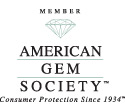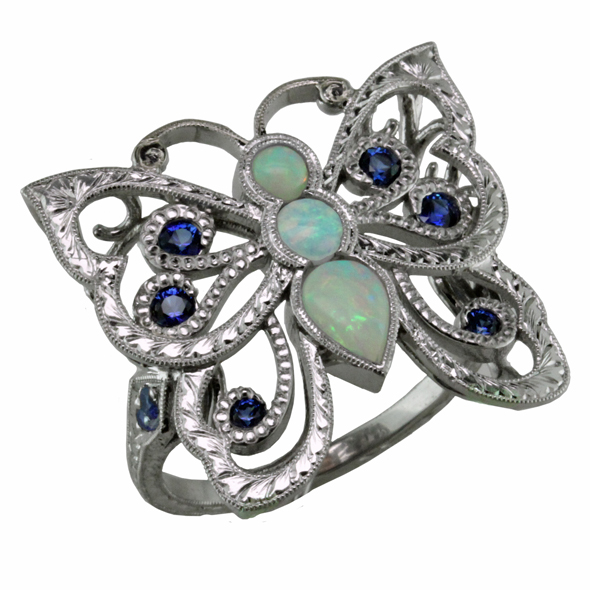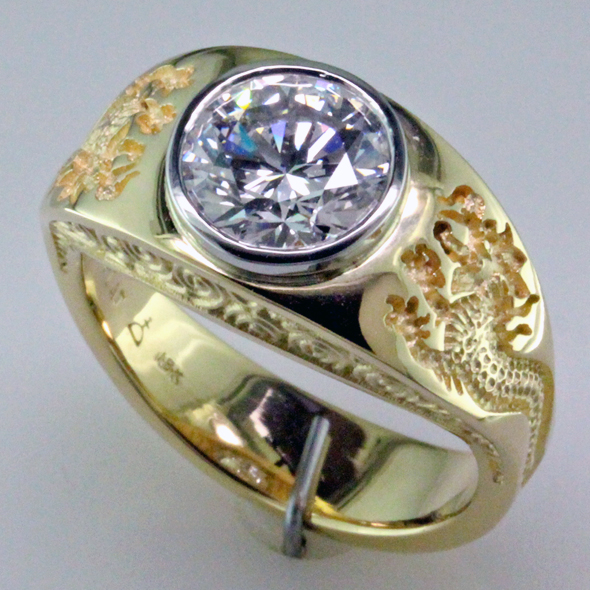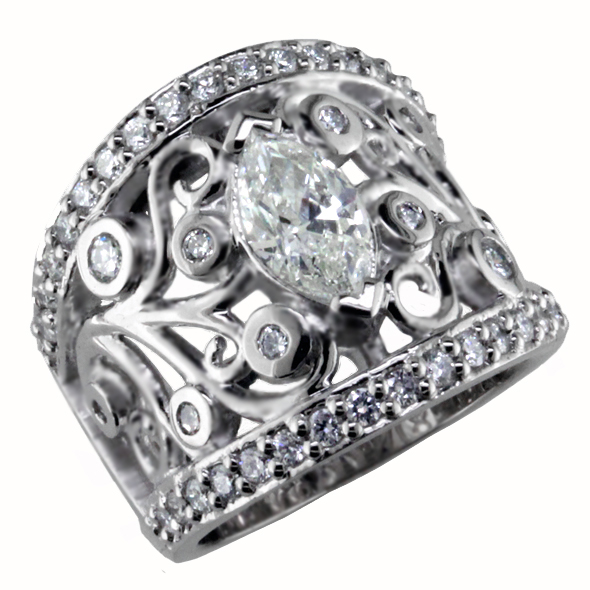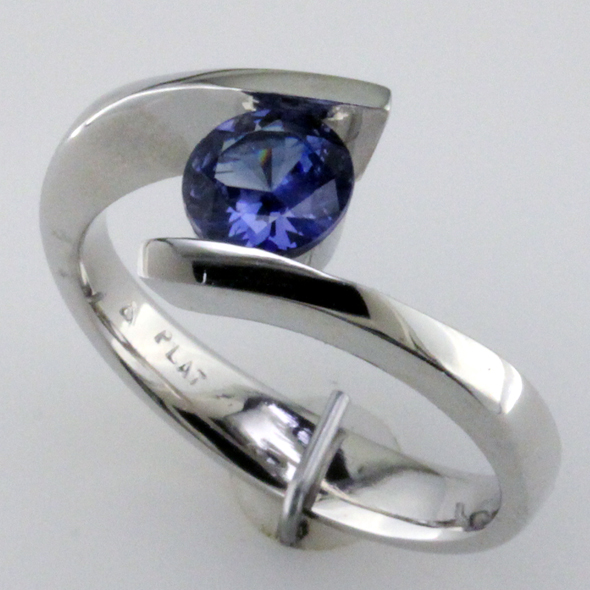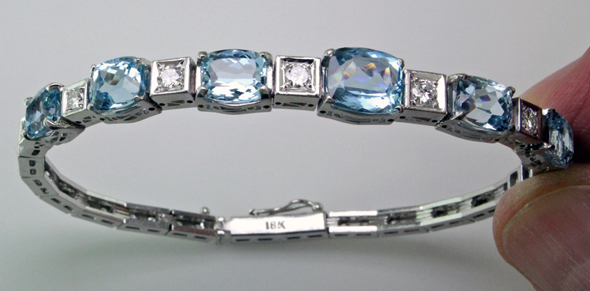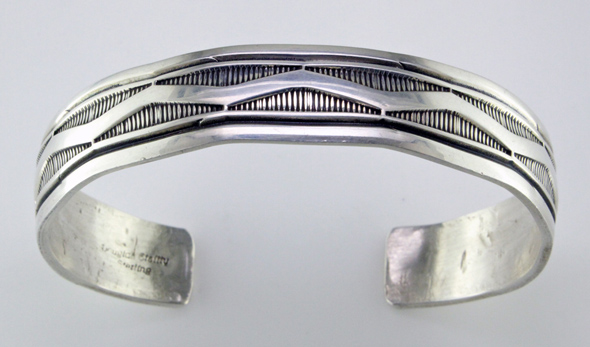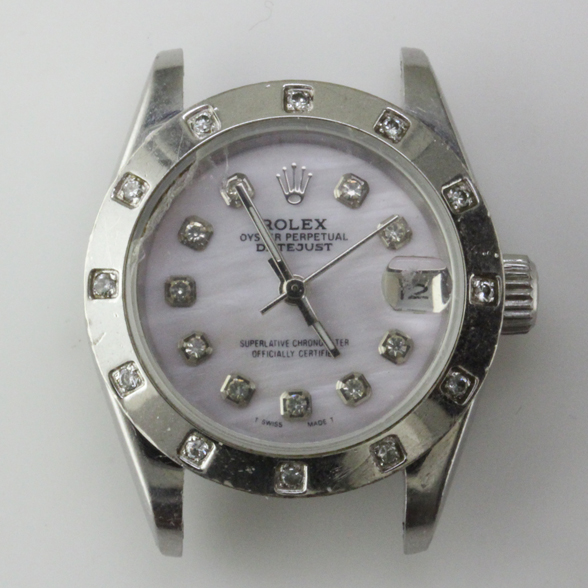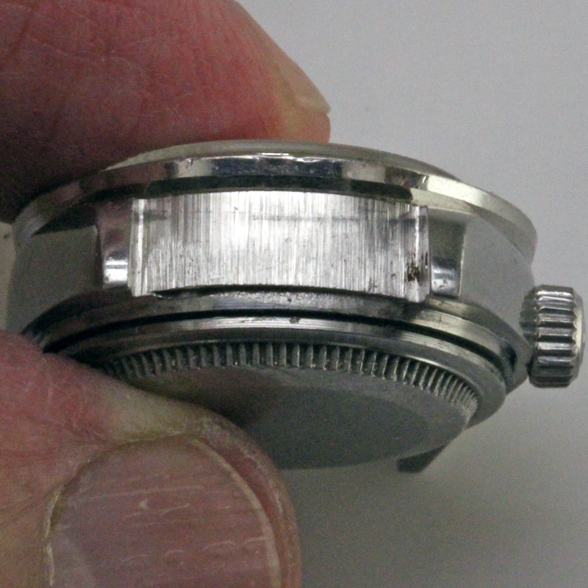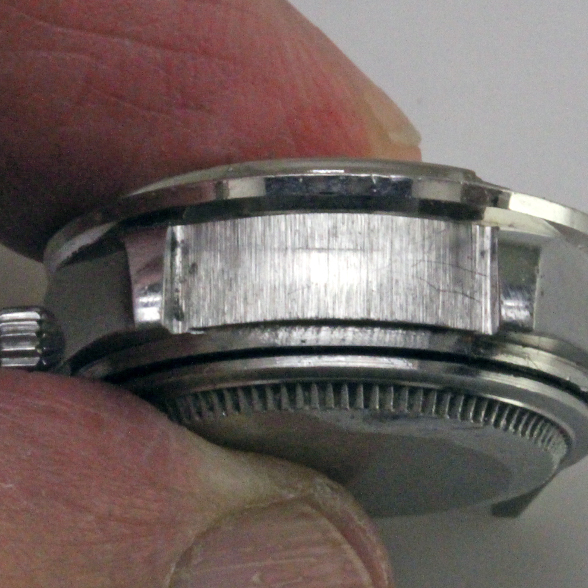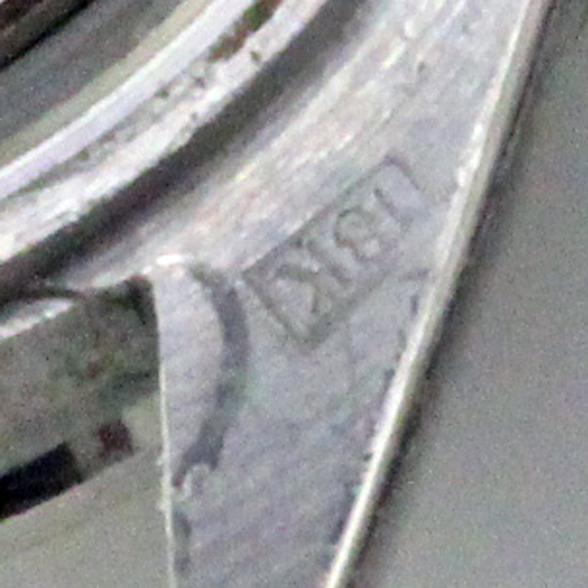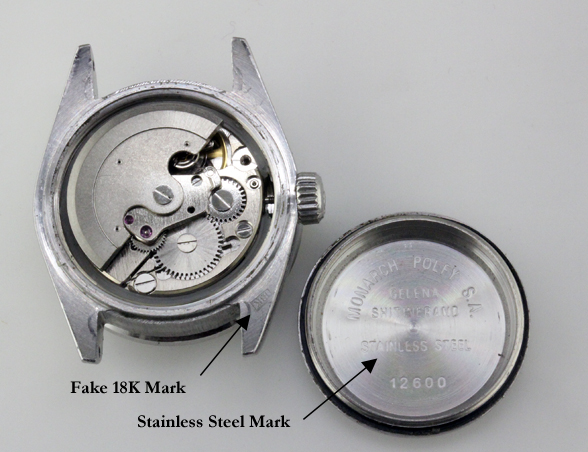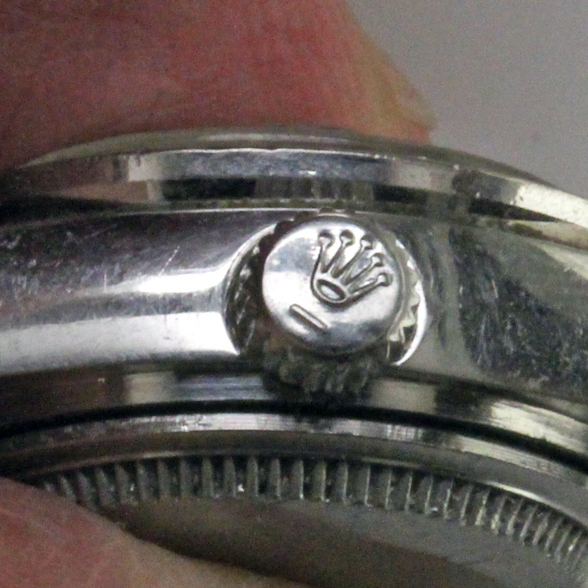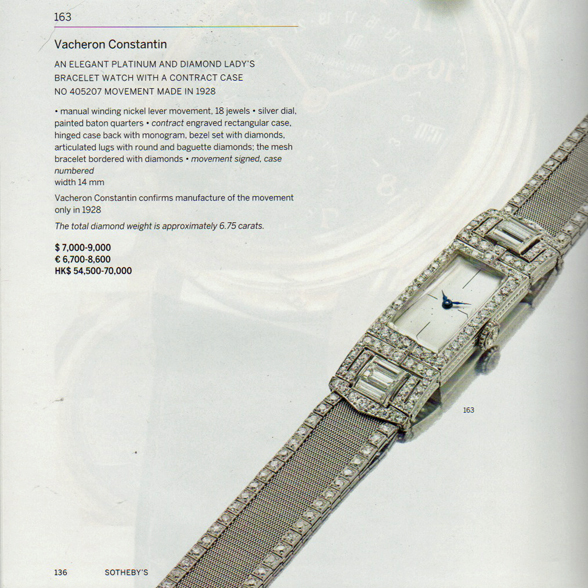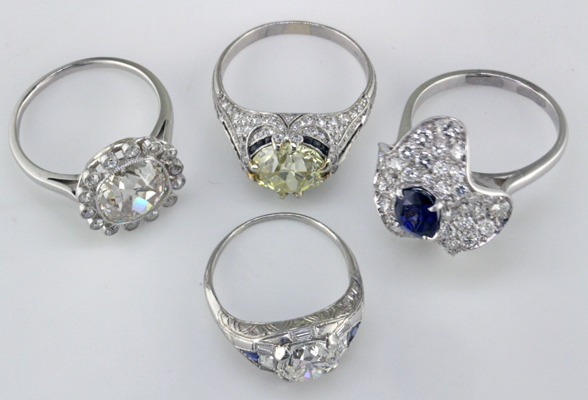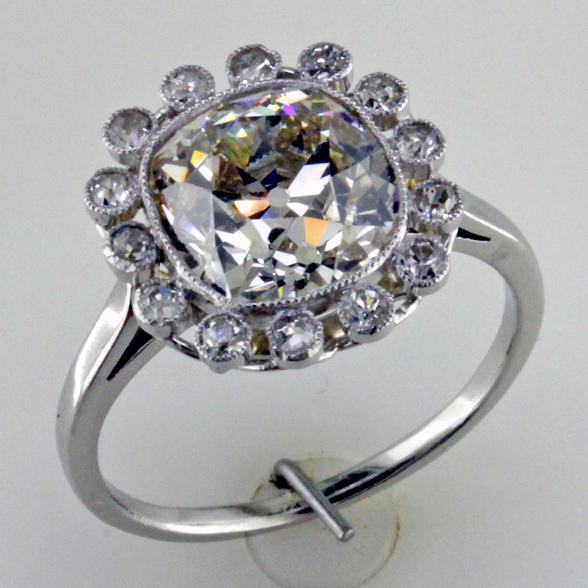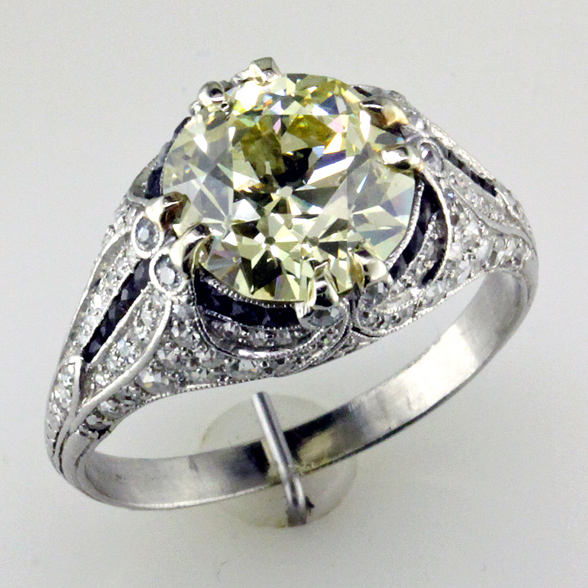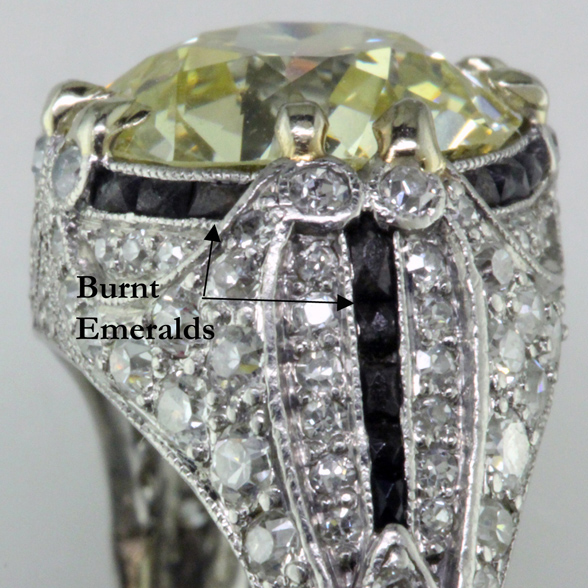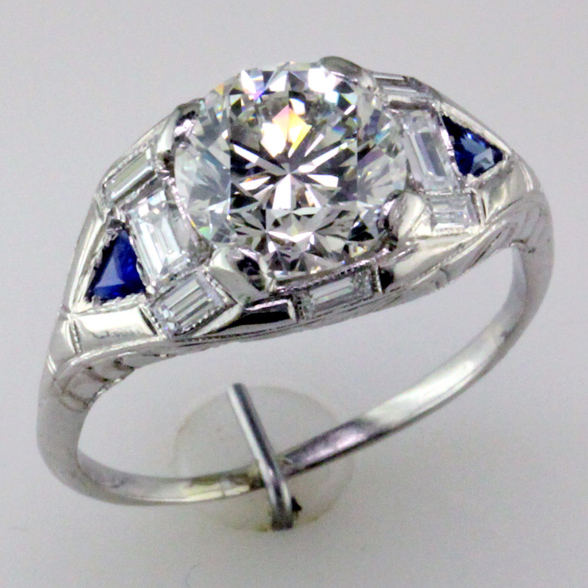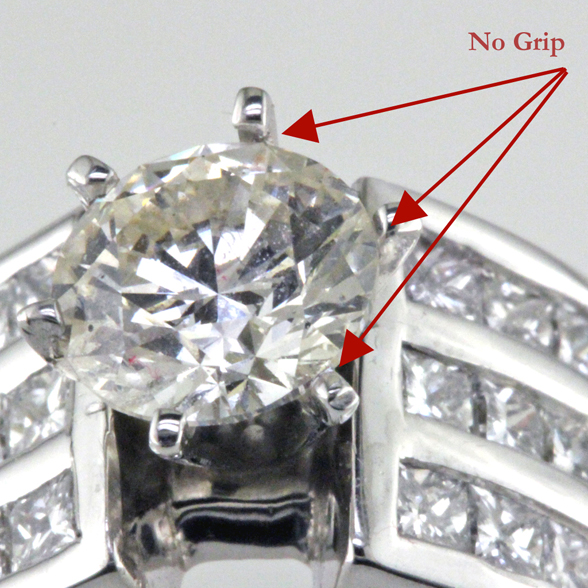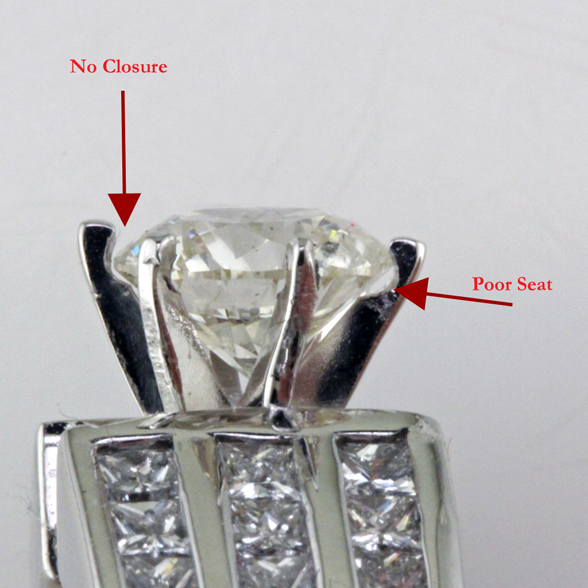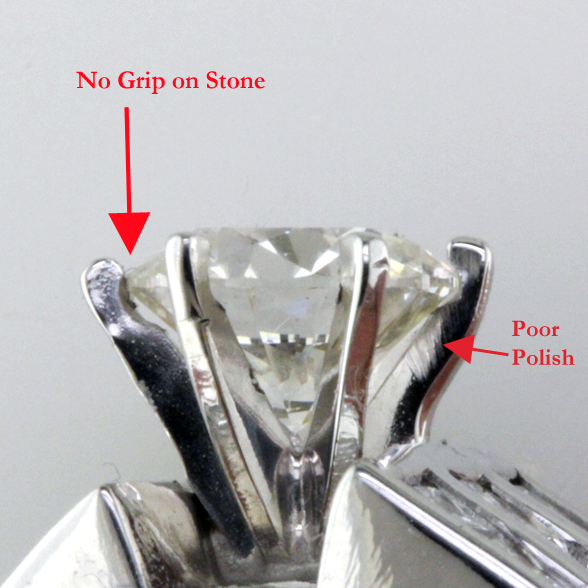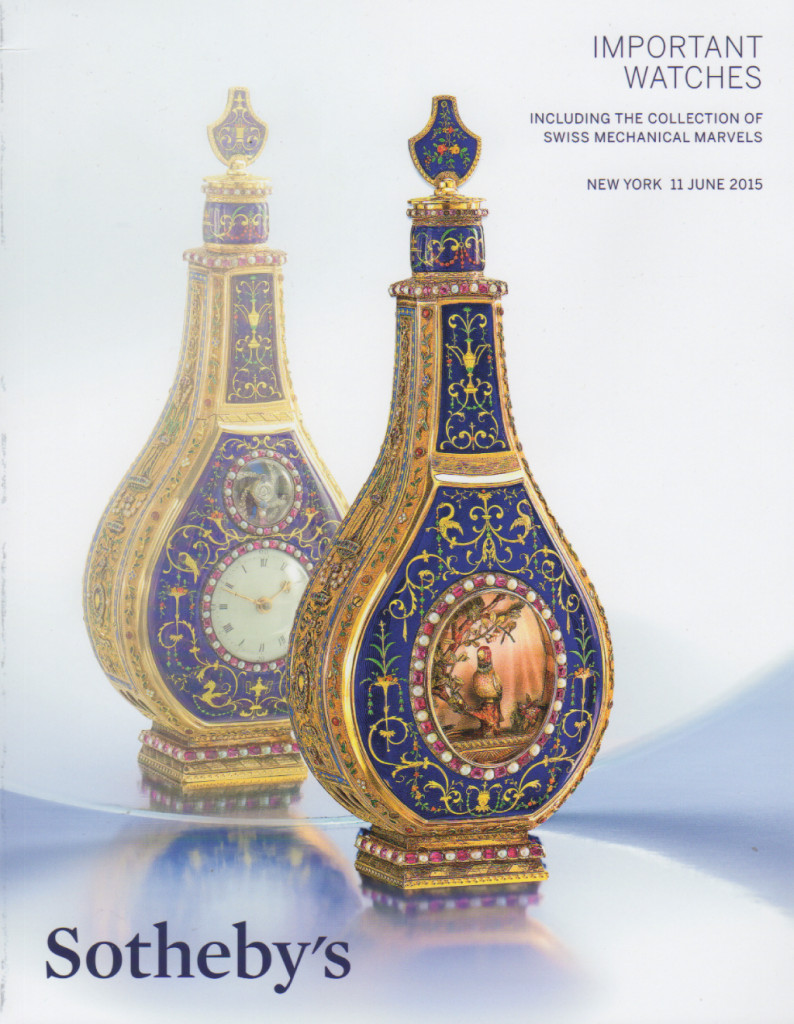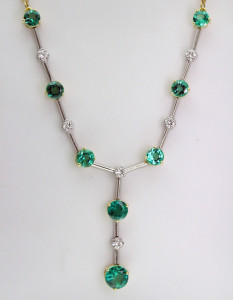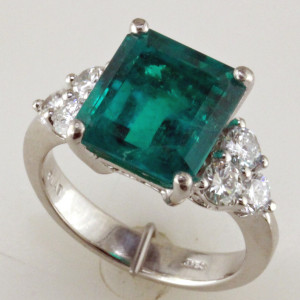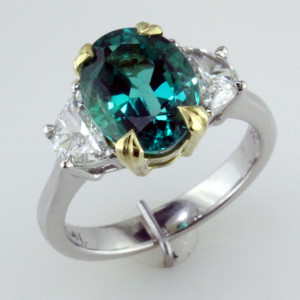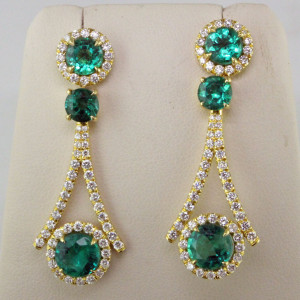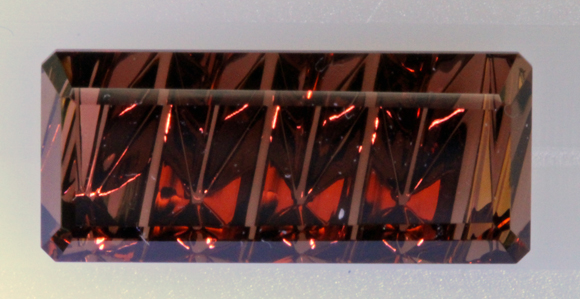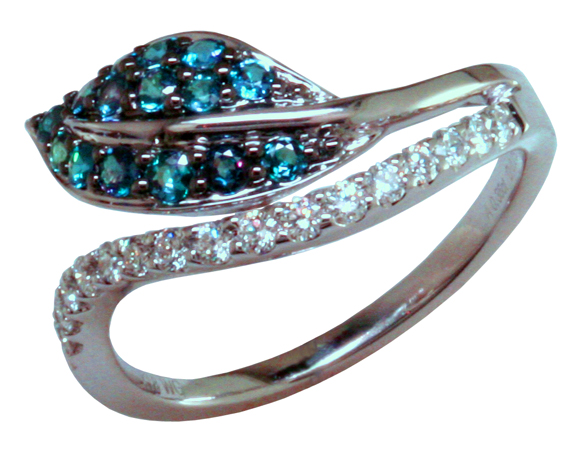
Natural Alexandrites & Diamonds in 18K white gold
Alexandrite is a very rare and valuable natural gemstone, famous because its color changes almost magically, from red to green. Alexandrite is a variety of Chrysoberyl, a mineral found in nature. Chrysoberyl is well suited for jewelry because it is very hard and durable, and because it’s rare, beautiful and unusual. The colors we see in a natural Alexandrite is usually a green to bluish-green when viewed in daylight, a red to reddish purple when viewed in incandescent light.
The mystique of Alexandrite begins with it’s name– as the popular but controversial story goes, Alexandrite was discovered on the tsarevitch Alexander’s sixteenth birthday, April 17, 1834 and named in his honor. The facts differ from this romantic tale, but the true story will probably be never known. Alexandrites quickly became a sensation because of their color changing property and their association with Russian royalty.
Around 1890 or so, using a method called the Verneuil process, chemists began producing a crystalline material that exhibited a strong color change like the Alexandrite, from reddish purple to blue green. This material is an oxide of aluminum known as Corundum. Pure corundum is colorless but can have different colors when impurities are present. Corundum is known as Ruby if red, Padparadscha if pink-orange, Sapphire for all other colors.
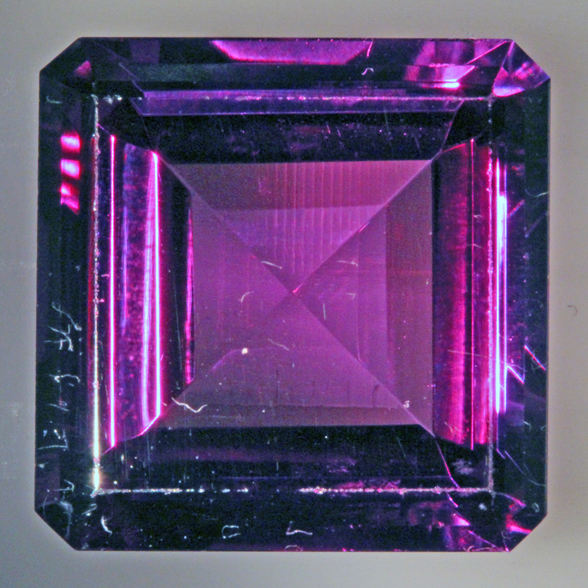
Synthetic Sapphire in Incandescent Light
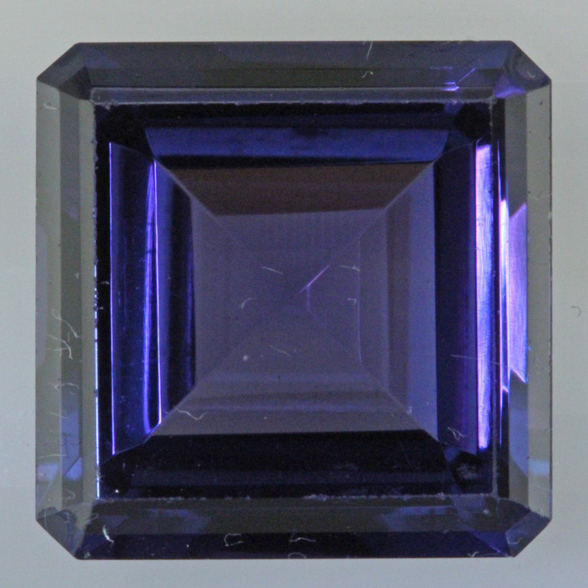
Synthetic Sapphire in Daylight
Man-made Corundum is referred to as synthetic sapphire or synthetic ruby, depending on its color. Vanadium is added to the melt to create the color change sapphire. The manufactured material with color change is properly known as synthetic color change sapphire, synthetic alexandrite-like sapphire or synthetic sapphire with alexandrite-like color change.
The color change in both natural Alexandrites and synthetic color change sapphires depends on the color temperature (Kelvin) of the light in which you view the stone. The stones strongly absorb light in the yellow section of the color spectrum. Daylight is lower in the color spectrum, so blues and greens will come thru. Artificial light, like candlelight and other incandescent lights, will emphasize the warmer end of the visible light spectrum, so you’ll see the reds.
Synthetic color change sapphire became enormously popular because of it’s interesting colors, great wearing qualities, and very low price. Synthetic corundums are manufactured inexpensively to this day by the same Verneuil method used in the 1890’s. We still see this material used as in class rings, costume jewelry, and as an alternate June birthstone for the true natural alexandrite.
Sadly, many people who own these synthetic color change sapphires are under the impression they are valuable natural Alexandrites. Because they’re inexpensively mass produced, synthetic sapphires with alexandrite-like color change are very cheap– a 2 carat stone might retail for $30, while a 2 carat fine natural Alexandrite might sell for $30,000! You can see why a person might be very excited if they have a large stone, thinking it’s genuine Alexandrite.
A worse problem is that synthetic color change sapphires are often sold as Alexandrite. Sometimes, it’s because the seller doesn’t know the difference, sometimes it’s with intent to defraud. Either way, it shows how important it is to deal with someone who is knowledgeable and ethical.
Synthetic color change corundum is easy for a gemologist to identify. The Verneuil process leaves visual traces that prove how the stone was made. The material is grown in a carrot shaped mass known a boule. The rounded form leaves curved growth lines within the stone known as curved striae. These may appear as straight lines, but careful examination will prove them to be slightly curved. Once you see the curved striae in a doubly refractive material, you’ve proven it to be synthetic corundum.
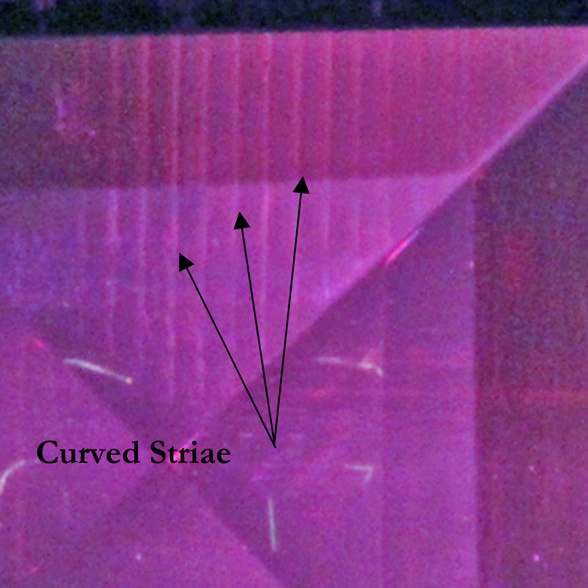
Curved growth lines in synthetic color change sapphire
At Mardon, four gemologists including a Certified Gemologist Appraiser are on staff to identify and value gemstones and jewelry you have questions about. We also buy estate jewelry. The fees for our gemological services are modest, and the knowledge you’ll gain can be quite valuable. Stop by our shop Tuesday thru Saturday, 10 to 5:30– we’re alway interested in seeing your jewelry and hearing the stories that go with your pieces.



